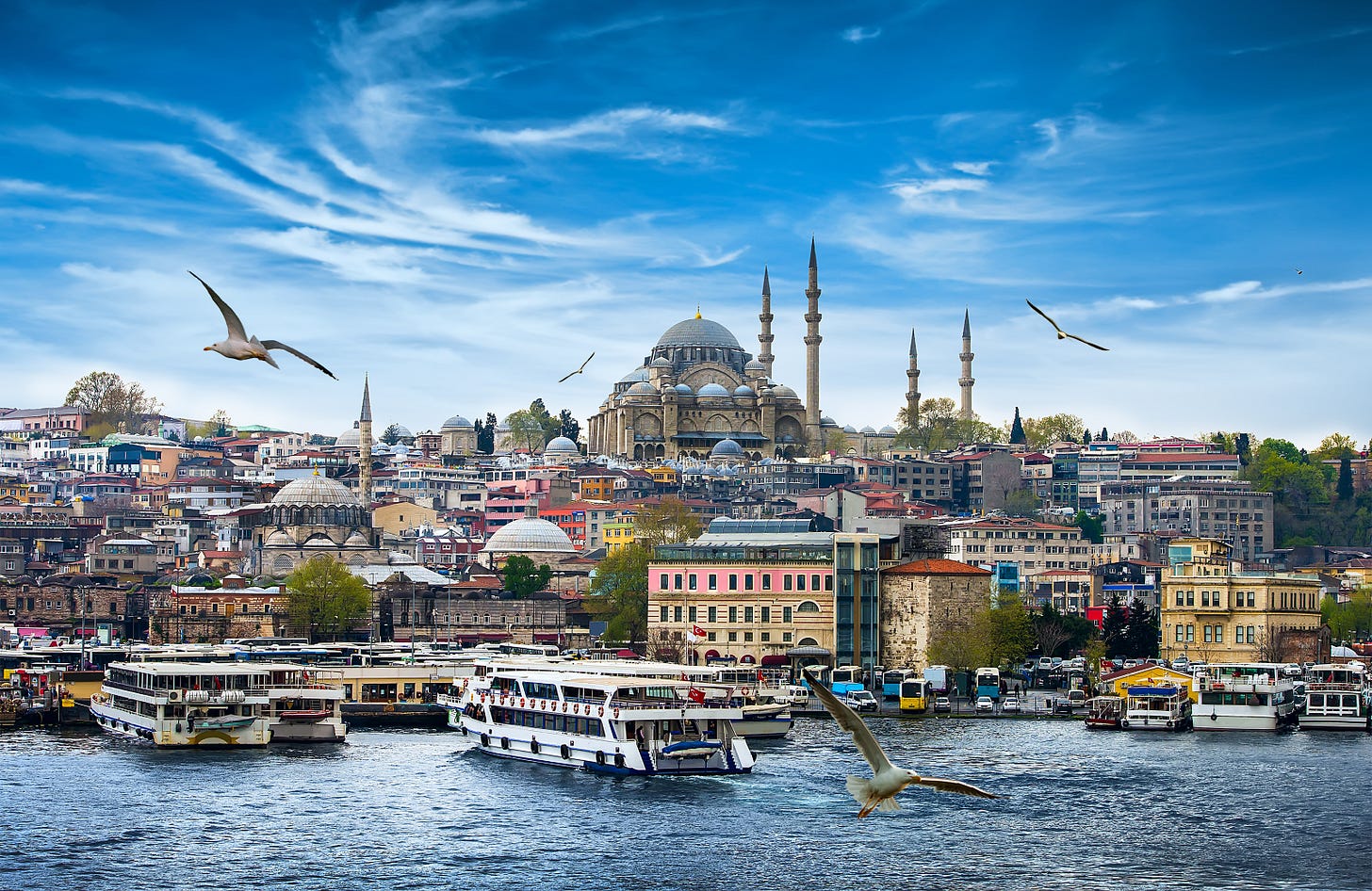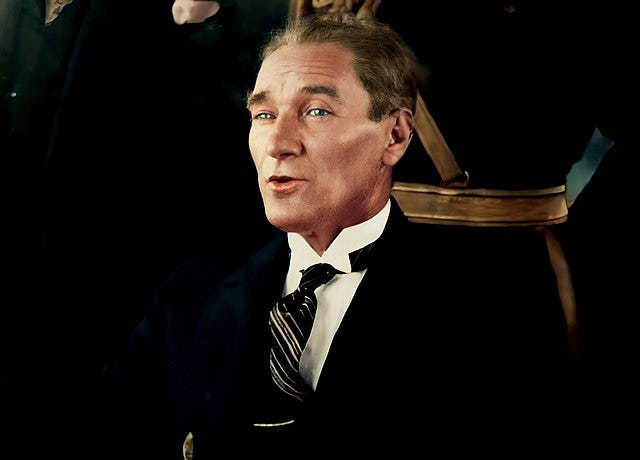Erdoğan Wins, Part I: Now he becomes very, very dangerous.
As he threatens a new constitution, he threatens an Islamic dictatorship.
Cato Institute Senior Fellow Mustafa Akyol put it best (as usual):
[Erdoğan] may eradicate whatever is left of the independent judiciary, free press and critical academia. … He has also promised a whole new constitution, which could realize many of the dreams of the religious right. Suggestions by pro-Erdogan partisans include abolishing the constitutional court, putting even more religion into public education, curbing women’s rights and banning “heretical” (liberal) interpretations of Islam.
It is decided. Just hours after polls closed in the 2023 run-off election that was Turkey’s best—and maybe last—chance of escaping the ever-more-strangling Islamist theocracy being spun by Recep Tayyip Erdoğan (pronounced Er’-do-wan)—Ahmet Yener, chairman of Turkey’s supreme election council, declared the ever-more-autocratic incumbent president the winner.
The losers were, first, CHP candidate Kemal Kılıçdaroğlu, Erdoğan’s primary opponent—who ran on a staunch anti-immigrant platform. Others were Muharrem İnce—hounded out of the race in the last weeks of the campaign by vile (and probably slanderous) media attacks—and anti-Kurdish, ultra-nationalist, pro-Turkic purity candidate Sinan Oğan. Turkey had no great choices in this election, and those who took a fall were no saints.
But also taking a precipitous plunge were NATO, Sweden, Ukraine, Syria, the Kurds, the United States, the West, the 6.5 million refugees in Turkey—and democracy.
If that seems like an overstatement, consider the fact that the moment Erdoğan came to power in the early 2000s, he began dismantling the secular society established by Mustafa Kemal Atatürk—the Turkish field marshal and statesman who founded the modern Republic of Turkey and served as its president from 1923 until his death in 1938. Erdoğan, by contrast, is nobody’s champion of secularism or democracy: he likes centralized power—but only his—and entertains himself with dreams of a Turkish empire that would challenge even the kingdom, the power, and the glory of the Ottoman Empire.
First, a wee bit of history …
It’s probably fair to say that Mustafa Kemal Atatürk, father of modern Turkey, dragged his homeland into modernity. Its beautiful Istanbul had centered the Ottoman Empire until the realm was dismantled after its defeat in World War I.
As soon as Atatürk was in power, he leveled a series of broadsides aimed at the widespread religious control then extant in the country. There are reports that the staunchly secularist head of state dragged Wahhabis into the streets and forcibly shaved off their beards and cut their hair. This infuriated religious conservatives, but Atatürk was far from done. He made two provocative moves with regard to women. First, he banned women from wearing headscarves and veils in public buildings, courts, and universities. Second, he made sure women had equal rights—the right to vote, the right to work, the right to have their own money, the right to inherit and the like. “Everything we see in the world is the creative work of women,” Atatürk said—and he meant it.
However, Atatürk had his own ideas about how women should behave, and he foisted those ideas on women whether they liked them or not. Even after the turn of the millennium, a conservative female lawyer in Turkey could not enter a court and argue a case with her veil on. No veiled woman could serve in the Turkish parliament because she couldn’t get into the parliament building in cover. When the Virtue Party elected Merve Kavakçı to parliament in 1999, secularist male parliamentarians forcibly prevented her taking her seat. When she went abroad for a few weeks, Turkey pulled her passport. But I digress.
Atatürk went further still. He created a state form—accepted and acceptable form—of Islam for the country. In truth, Atatürk made secularism Turkey’s real religion, and that sat very badly with religious figures who once had great power—and with some men, who once had all the power. And, as we’ve seen time and again, religious conservatism, by conveying privilege to those who won’t want to give it up, dies very, very hard. In Turkey, it never even napped.
The Coming of Erdoğan
Recep Tayyip Erdoğan, born in 1954, was just 25 years old when the Ayatollah Khomeini engineered a revolution in Iran, threw out a profligate and profane shah and his milk-bathing empress, and created an Islamist state. And as would happen in many places, zealous young religious conservatives with political aspirations dreamed of creating Islamic states of their own. This dream had earlier reared its head in Indonesia and was defeated with the adoption of the Pancasila Doctrine just after World War II, but, in the end, Islamists overtook the oil-rich Aceh Province and now threaten Bali. This dream also arose in Malaysia, and with Mohammed Mahathir, it won. It occurred to the Taliban, which supported Osama bin Laden and Ayman al-Zawahiri after him; defeated once, they now rule Afghanistan.
Erdoğan’s first major foray into Turkish national politics was as mayor of Istanbul. He ran as part of the Virtue Party and took office in March 1994. He was clearly heavily Islamist.
And that got him into trouble. In December 1997 in the city of Siirt, Erdoğan recited a poem by an early 20th-century Pan-Turkish activist. A version of the poem did appear in approved Turkish texts, but Erdoğan added a little embellishment of his own:
“The mosques are our barracks, the domes our helmets, the minarets our bayonets and the faithful our soldiers.”
Erdoğan was arrested, put on trial, and convicted of “incitement to violence and religious or racial hatred.” He was stripped of his position as mayor of Istanbul and sentenced to 10 months in prison, but he served only four. However, the conviction was potentially deadly for his ambitions because the judiciary banned him for running for high public office for the rest of his life. Not only that, but the judiciary—joined by the army—kept banning virtually every political party with which Erdoğan was associated. In 2001, the government even banned the Virtue Party.
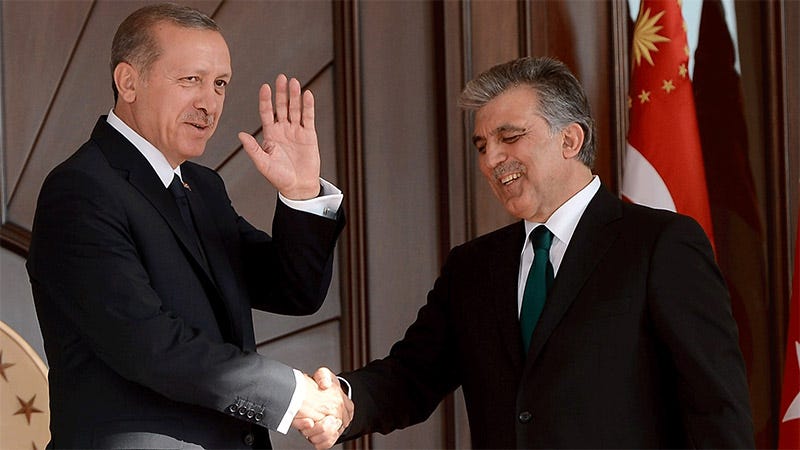
Erdoğan tacked. In 2001, Erdoğan and Abdullah Gül created the Justice and Development Party—the AKP. Erdoğan wasn’t less a radical Islamist than he’d been before, but the party itself took a centrist turn that was less overtly threatening. Yet Erdoğan was still prohibited from holding office, so in the 2002 general elections, the AKP ran Abdullah Gül for prime minister, and the party won the parliamentary vote in a landslide. The CHP—the Republican People's Party, the Kemalist and social democratic political party founded by Mustafa Kemal Atatürk—won less than 20% of the vote.
Fortunately for Erdoğan, an opposition party engineered a rule change in late 2002 that made it possible for Gül to annul the ban on Erdoğan’s holding office. The AKP immediately ran Erdoğan in a by-election in Siirt in 2003—and he won handily. Just weeks afterward, Gül, who had been prime minister for just four months, ceded his office to Erdoğan, who was now the most powerful political figure in Turkey. For his part, the anti-alcohol Gül, as staunch an Islamist as Erdoğan, deftly slipped only very slightly into the background—as Deputy Prime Minister and Foreign Minister.
In early 2003, the prime minister was most the powerful person in Turkish politics—the one who held the most power. But there was also great power in the presidency: even though it was held to be a largely ceremonial position, the presidency held some powers crucial to Erdoğan’s long-term plans. At the time, the president had the power to veto laws he believed violated the Constitution of Turkey and could also veto appointments to the highest positions of the state administration, public institutions, and universities. This was the power Erdoğan wanted—or wanted within his control. As the elections (and constitutional referendum) of 2007 approached, it was clear Erdoğan would run for president.
A wave of apprehension swept Turkey. The head of the military cautioned Erdoğan not to seek the presidency, but it was what the people did that made Erdoğan back down. Aware of Erdoğan’s Islamist—and authoritarian—leanings, Turks took to the streets. On April 14th, a crowd of as many as 1.5 million people marched in Ankara against his running.
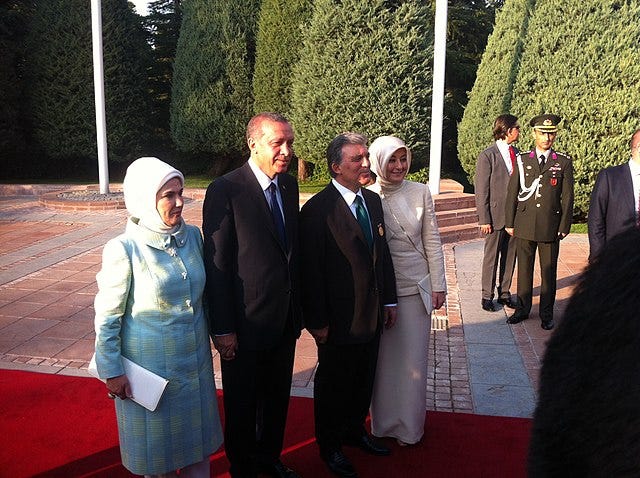
Erdoğan instantly tacked again. On 24 April Erdoğan announced that the party had nominated Abdullah Gül for the presidency, but the capitulation was not enough. To say Gül was a flawed candidate is a staggering understatement. Gül had openly stated that he wanted to change the secularist nature of the country and had favored a number of restrictive laws based on religion. Also, his wife kept appearing in a headscarf at state functions—an act prohibited by law and Kemalist convention. So, the would-be president—who would be charged with protecting the secularism of the country—came across as a wolf in sheep’s clothing, which he was. Thus, the protests continued. Less than a week after his candidacy was announced, more than a million people turned out for an anti-Islamist protest in Istanbul. By the middle of May, tens of thousands had taken to the streets in Manisa and Çanakkale, and more than one million in İzmir.
Britannica sums up what happened next:
The military, which had maneuvered Turkish political proceedings in the past, issued a memorandum on the Internet criticizing the rising role of Islamists in the government and indicating military readiness to act if an unapproved candidate, such as Gül, won the presidency; this approach was dubbed an “e-coup” by pundits. Gül went on to receive the majority of the votes in parliament’s election for the presidency, but the CHP opposition boycotted the vote and caused Gül to fall short of the necessary quorum by a narrow margin. Consequently, the election results were later overturned in court, and a stalemate ensued. Erdoğan worked to resolve the standoff by calling for early parliamentary elections, in which the AKP secured a decisive victory. In spite of the previous political standoff, the AKP then once more nominated Gül as its candidate, and in the parliamentary elections that followed he won the presidency by a wide margin.
Note this: Erdoğan worked to resolve the standoff by calling for early parliamentary elections. This shows Erdoğan’s pattern of manipulation:
If you can’t get what you want by following the law as it’s written, change the rules: change the laws—change the judiciary—call for snap elections—change the constitution (again)—take control of the press and the army and even the structure of the entire government—so that you can get what you want. God is on your side. Go for it!
Erdoğan now had what he wanted: a president who would not veto a single thing he wanted to do. So, for the moment, he was fine. If Erdoğan could not (yet) take the presidency, he’d get a president who would do as he was told—and he did.
However, 2007 was also a year in which two longstanding problems, always simmering, came to a full, raging boil:
1. The Murder of Turkish-Armenian Journalist Hrant Dink
Hrant Dink was a Turkish-Armenian intellectual, journalist, and columnist, who served as editor-in-chief of the bilingual Turkish-Armenian newspaper Agos. He was a prominent and vocal critic of Turkey’s denial of the Armenian Genocide of 1915-1916, in which as many as 1.2 million Armenians—80% of the entire Armenian population in Turkey—were killed outright or force-marched and died of starvation, mistreatment, or disease.
Dink campaigned for human and minority rights in Turkey and for Turkish-Armenian reconciliation. But such peace could not come while Turkey denied that the genocide ever happened and while the government promptly arrested critics for even suggesting that it did. Dink was prosecuted three times under a code criminalizing “denigrating Turkishness” (Article 301) and received nearly constant death threats.
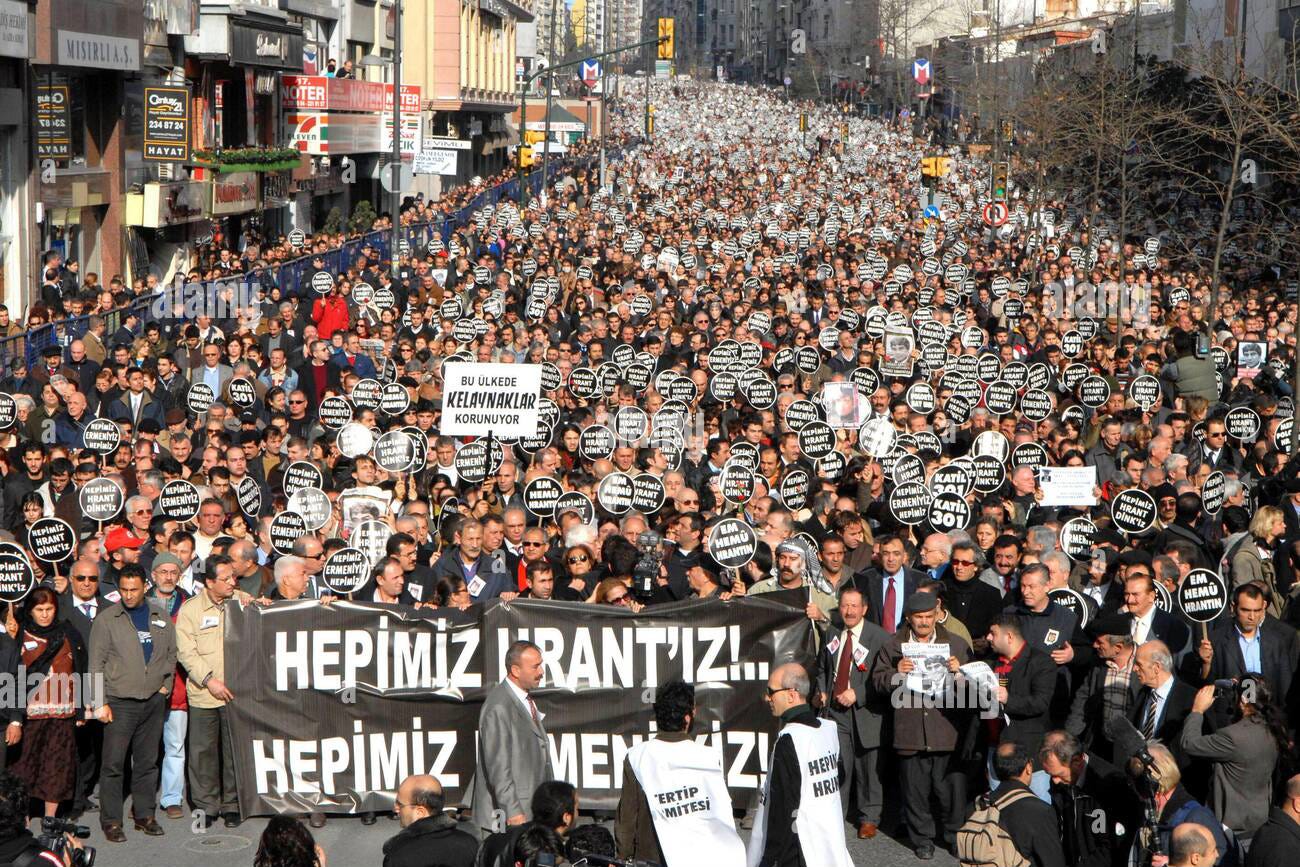
Dink, then 52, was assassinated in Istanbul on January 19, 2007 by 17-year-old Turkish radical nationalist Ogün Samast, who shot the journalist in the head three times. Dink died instantly. That was horrific. What came next was even worse. Photographs of Samast, the killer, standing in front of the Turkish flag—and flanked by smiling Turkish police and gendarmerie—leaked out and sparked an immense scandal in Turkey. Samast was tried and convicted and sentenced to 22 years in prison. The law enforcement officers in the selfies were expelled from government.
2. Festering Kurdish Nationalism and the Reviled PKK
Kurdish nationalism is a political movement that claims that Kurds are a nation and should have an independent homeland comprising the Kurdish majority areas of Iran, Iraq, Syria, and Turkey. Once, briefly, between 1921 and 1923, they had it, a windfall from the defeat of the Ottoman Empire in World War I. It wasn’t to last. With the partitioning of the empire, the Kurdish-majority territories were divvied up between Turkey, Iraq, Iran, and Syria.
Beginning in the 1970s, the Kurds in Iraq pursued independence, and the Iraqi Ba'ath Party eventually responded with incredible ferocity, massacring 182,000 Kurds in the Anfal Genocide of 1988, which brought Kurdish issues to international attention.
The PKK, the militant Marxist Kurdistan Workers’ Party, was founded in 1984. According to the Office of the Director of National Intelligence:
The Kurdistan People’s Congress (Kongra-Gel or KGK, formerly the Kurdistan Workers’ Party, PKK) is a Kurdish separatist group primarily active in part of northern Iraq and southeastern Turkey. Composed mostly of Turkish Kurds, the group in 1984 began a campaign of armed violence, including terrorism, which resulted in over 45,000 deaths.
The PKK is designated as a terrorist organization by the USA, all the nations of the EU, Turkey and a number of other countries. The PKK’s leader is Abdullah Öcalan, who was captured and imprisoned by Turkey in 1999, and for a while militant activities ceased. The PKK resumed guerrilla activities in 2004. The group was thought to be the source of a number of subsequent attacks, and in October 2007 the Turkish parliament approved military action for one year against PKK targets across the border in Iraq. A series of strikes began in December, and a ground incursion was initiated in February. Although the United States indicated its support for the limited maneuvers against the PKK by sharing intelligence with Turkey, it encouraged the development of a long-term resolution to the conflict.
Erdoğan Escapes 2007
By the end of 2007, the tragedy of and rage over the murder of Hrant Dink was drifting into the background—though the quest for the recognition of the Armenian Genocide now had the support of many, if not most, Turks. Dink’s killing began a process that would have, at best, limited success.
Also at the end of 2007, Turkey was at war with the Kurds, but that war was seen as necessary by the Turks, by the governments which also had large Kurdish minorities—Iran, Iraq, and Syria—and by the United States, albeit in a limited way.
Eyes ever ahead, Erdoğan gazed at the future that would begin with the national elections 2011. Erdoğan could run for prime minister just once more before term limits kicked in.
By the time his new campaign began, the AKP would be facing an existential threat.
Stay tuned. Part II continues next week …


